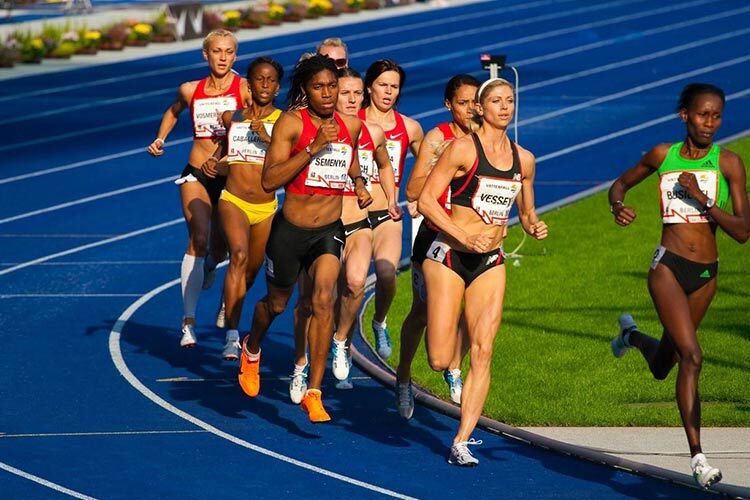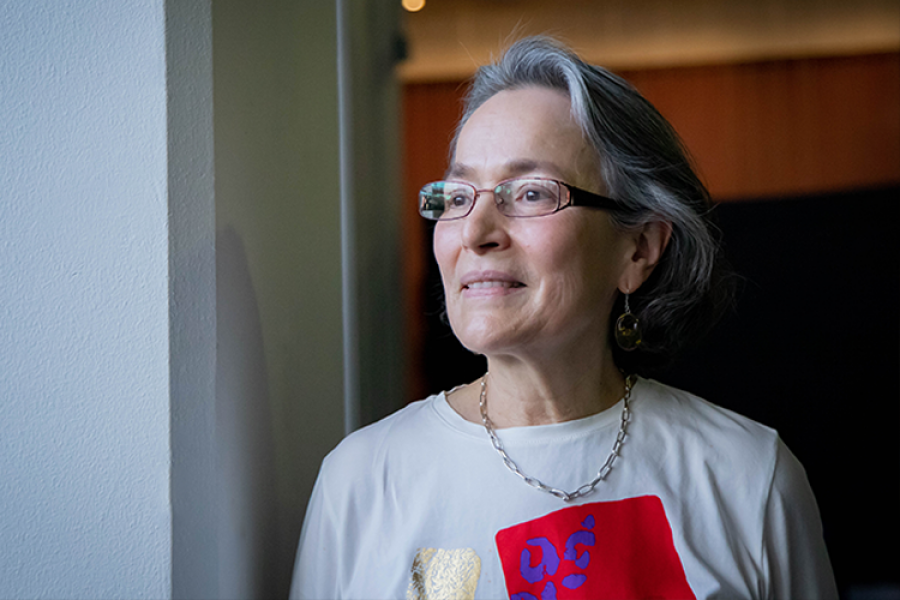The 2024 Paris Olympics have reignited the debate over intersex athletes with the participation and victory of boxer Imane Khelif. In this article, published by Agencia SINC, experts discuss whether high testosterone levels confer a competitive edge.
Algerian boxer Imane Khelif called for an end to bullying athletes after she faced a wave of online abuse over misconceptions about her gender during the Paris Olympics. pic.twitter.com/Pl1sc5j181
— AP Sports (@AP_Sports) August 5, 2024
“I am a woman, and I am fast.” South African athlete Caster Semenya (1991) asserted her identity after the International Association of Athletics Federations (IAAF) released new regulations concerning female athletes with high levels of testosterone, the primary male hormone.
According to these regulations, to compete in races from 400 meters to one mile, athletes must reduce their testosterone levels to below 5 nmol/L in blood. This rule, effective since May 2019, sparked controversy, especially after the Court of Arbitration for Sport (CAS) temporarily suspended it following an appeal by Semenya and the South African Athletics Federation, though ultimately CAS upheld the IAAF’s rule.
Semenya is an intersex athlete with hyperandrogenism, resulting in higher testosterone levels compared to non-intersex women. Some studies have shown that elevated levels of this hormone can enhance athletic performance.
A study published in the British Journal of Sports Medicine indicated that increased testosterone in young, physically active women (not elite athletes) improved their endurance and increased muscle mass and leanness.
How Much Does Testosterone Influence Performance?
Researchers randomly selected 48 physically active women aged 18 to 35 for a 10-week daily treatment with either 10 milligrams of testosterone cream or a placebo. They measured the hormone’s impact on aerobic performance by recording how long the women could run on a treadmill before exhaustion.
They also assessed anaerobic performance by measuring leg power (through cycling) and muscle strength (via squat jumps, standing vertical jumps, and knee strength). According to the study, average testosterone levels increased from 0.9 nmol/L to 4.3 nmol/L in the women who received the hormonal cream, with no increase in the placebo group.
Moreover, women who received the extra testosterone lasted 21.17 seconds longer until exhaustion, an 8.5% increase compared to the others. Researchers observed no changes in anaerobic performance or weight in either group.
However, there were differences in muscle mass: those who received the hormonal cream gained 923 grams of muscle mass overall and 398 grams in their legs, compared to 135 grams overall and 91 grams in their legs for the placebo group.
The study’s authors acknowledged limitations, such as not including elite athletes, the small number of participants, and the brief 10-week trial period. SINC contacted the study’s lead author, Angelica Lindén from the Karolinska Institute (Sweden), but she declined to comment.
Some Tests Are Affected, Others Are Not
“These conclusions show that testosterone influences athletic performance, something no one has denied, but the extent of this influence remains unclear,” Jonathan Ospina Betancurt, PhD in Physical Activity and Sports Sciences and professor at the European University of Madrid, told SINC.
Ospina emphasized that factors such as diet, training methods, sports facilities, and economic support also affect athletic performance, but their exact impact is impossible to determine.
Among the study’s authors is Stéphane Bermon, who in 2017 co-authored another study in the same journal with Pierre-Yves Garnier. This earlier study served as the scientific basis for the IAAF’s controversial regulation. However, several scientists, including Ospina, have disputed its conclusions, arguing it failed to demonstrate that high testosterone levels improved athletic performance.
“We conducted a reanalysis and found methodological errors. The original authors have not provided data to replicate their analyses,” Ospina stated.
Despite the controversy, CAS upheld the IAAF rule requiring athletes to lower their testosterone levels to compete in events from 400 meters (including hurdles) to one mile.
Interestingly, the research underpinning the regulation did not find performance advantages in women with high testosterone levels in the 1,500-meter or mile events, both covered by the new rule. Conversely, although the research showed advantages in hammer throw and pole vault, these events are not regulated by the controversial rule.
Rights Violations and Discrimination
“One of the primary tenets of the World Anti-Doping Agency is to avoid substances that could harm health,” Ospina noted. “Here, we violate this principle by forcing athletes to take pharmacological treatments detrimental to their health and natural physical conditions,” he argued.
To lower testosterone levels, the IAAF suggests athletes take birth control pills, which have health consequences and, according to experts, contradict the spirit of sports.
Various international bodies have opposed the measure, arguing it violates athletes’ rights and principles of equality and non-discrimination. The Office of the United Nations High Commissioner for Human Rights (OHCHR) told SINC that “rights are legal and fundamental and apply to all individuals, regardless of ethnicity, sex, age, testosterone levels, leg length, height, or physical strength.”
Special rapporteurs on health, torture, and the working group on discrimination against women sent a letter to CAS in May 2018 (before the ruling) arguing that the regulation was discriminatory. Moreover, the United Nations Human Rights Council passed a resolution urging the OHCHR to produce a report on eliminating discrimination against women and girls in sports.
Presented to the Council on June 15, 2021, the report recommends that states include intersex variations in their anti-discrimination laws. It highlights that private sports bodies and their regulations dominate the sports sphere, sometimes leading to human rights violations for athletes.
The report stated that “States must ensure that non-state actors, including sports regulatory bodies, respect human rights in their regulations and are held accountable for violations.”
It also recommends that these sports bodies review and revoke eligibility regulations that negatively impact athletes’ rights, including those with intersex variations.
According to the report, “States should prohibit the application of regulations that pressure athletes to undergo unnecessary medical interventions as a prerequisite for participating in sports and should review and investigate the alleged application of such regulations.”
The Case of Spain’s Martínez Patiño
Caster Semenya is not the only athlete to defend her intersexuality. Before her, Indian sprinter Dutee Chand (1996) fought in court after being suspended in 2014 for hyperandrogenism. In Spain, María José Martínez Patiño (1961) stands out.
“María José is a hurdler with a 46 XY karyotype and androgen insensitivity syndrome (or Morris syndrome), a genetic condition where the hormones responsible for developing male physical characteristics are not assimilated by the cells,” Oti Camacho, head of Diversity at the Association for Women in Professional Sports, told SINC.
This syndrome causes the body to develop an entirely female appearance, “so what could be an advantage isn’t because androgens cannot be synthesized,” Camacho explained. Martínez Patiño was excluded from the 1985 Universiade in Kobe (Japan) for having a Y chromosome, considered an index of masculinity. After years of fighting, she succeeded in getting the IAAF to remove the chromosomal examination.
Gender verification tests began in the 1960s. As Martínez Patiño recalled in El País, athletes had to parade naked before a committee of gynecologists who decided if they were men or women. The visual test was replaced by chromosomal testing, which was then replaced by testosterone testing, which is currently in force. “Since this is only applied to female athletes and not male athletes, it is a discriminatory and sexist measure,” Camacho denounced.
Outside elite sports, Jeffrey Eugenides’ novel Middlesex (2002), which won the Pulitzer Prize in 2003, vividly portrays the struggles faced by intersex individuals. The protagonist, Cal Stephanides, narrates: “Classmates ridiculed me, made a guinea pig by doctors, fondled by specialists, and measured by Moneybags.”
In the 21st century, elite athletes still undergo these tests to counter supposed competitive advantages, while taller basketball players face no penalties for their natural advantage.
What is Intersexuality?
To answer this question, we must first understand how a person’s genetic sex is determined. X and Y chromosomes determine sex in humans and other mammals. We have 23 pairs: 22 autosomes (non-sex chromosomes) and the 23rd pair, the sex chromosomes. Females have two X chromosomes (XX) and males have one X and Y chromosome (XY).
Sex is determined at conception. The egg contains an X chromosome, while the sperm that fertilizes it carries either an X or a Y chromosome, determining the baby’s sex. If the father’s X chromosome prevails, the baby will be female; if it inherits the Y chromosome, it will be male, with the characteristic genital organs for each sex.
However, discrepancies can occur between internal and external genitalia, such as a baby having female chromosomes and ovaries but male external genitalia. In these cases, we speak of intersexuality. Ambiguous genitalia can also develop, where external genitalia do not have the typical appearance of a boy or girl, such as a baby whose testicles have not descended.
“Intersex individuals are born with variations of sexual characteristics that do not fit medical or social norms for female or male bodies,” Morgan Carpenter, co-executive director of Intersex Human Rights Australia, told SINC. According to Carpenter, there are over 40 different intersex variations that can be determined prenatally, at birth, in childhood, during puberty, and at other times. Hyperandrogenism and Morris syndrome are among these variations.
Hormone concentrations differ by sex. Androgens are typically male sex hormones—testosterone being the most well-known—while estrogens are female hormones. (Agencia SINC)

















